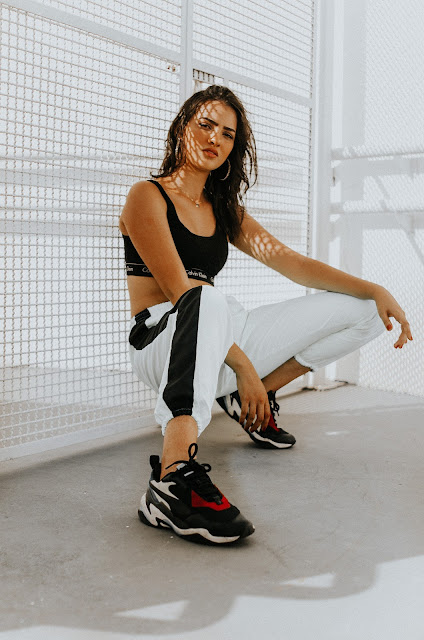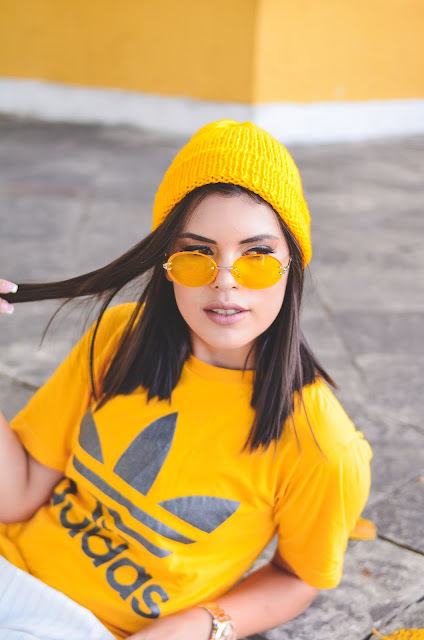If you do a little research on fashion, you will probably come across the different types of fashion design. The names of these types of designs may vary slightly depending on the source, but in general, the idea of the hierarchy of fashion design remains the same.
Fashion design can generally be divided into different levels, and although there is some overlap and subcategories, there are five main types of fashion design. The five types of fashion design are:
- Haute Couture Fashion
- Luxury Fashion
- Fast Fashion
- Economy Fashion
- Ready-To-Wear Fashion
These types of fashion design are explained in detail below, but in general, these design levels start with haute couture, which is the most sophisticated and exclusive fashion creation, and go down to economy fashion, which is the cheapest and lowest quality fashion items.
Some of these types of fashion have interchangeable names, for example, ready-to-wear fashion is sometimes referred to as high street fashion or prêt-à-porter.
If you are interested in getting started in the world of fashion design, it can be especially helpful to familiarize yourself with fashion terminology. Knowing the different types of fashion design can help you determine your career goals and better understand how the world of fashion works. Read on below to learn about the intricacies of each type of fashion design and how you can get started in the field.
Do you about Fashion Design?
Fashion design is the art of creating clothing and accessories. It can range from creating pieces that are valued more as art than function, to pieces that are minimalist and practical.
Fashion design can be considered an art form where aesthetics and beauty are carefully considered in the design of clothing and accessories. Fashion design changes over time and adapts to social and cultural influences. As such, it requires a great deal of creative flexibility and has its finger on the pulse of society, ready to change and evolve with changing tastes.
At the beginning of every garment or accessory is an idea. These ideas are brought to life through fashion design to determine everything from the creative vision to the market research that guides production, to the fabrics used, to the overall aesthetic statement, and beyond to create the final product.
1- Haute Couture Fashion
At the top of fashion, the design hierarchy is haute couture. Haute couture involves the creation of limited-edition, bespoke garments, and accessories that are individual works of art. Haute couture is literally French for “high tailoring” and originates in bespoke garments designed and sewn for private clients.
Haute couture pieces are often handmade and require countless hours of work. Most often, the pieces are made by an entire team of experienced designers in an atelier or workshop. The pieces may require several fittings to become perfect, and are usually made from the finest materials and expensive fabrics. These pieces are usually one-of-a-kind with great attention to detail.
To qualify as haute couture, fashion designers must be appointed by the French government. Designers must own an atelier in Paris, employ at least 15 full-time staff, and present 35 new, original models to the public twice a year. These guidelines were established in 1945 and must be strictly adhered to by even the largest fashion houses.
Luxury fashion is the fashion design that bridges the gap between exclusive, bespoke, custom-made clothing and mass-produced, readily available clothing. Luxury fashion includes high-end garments that are not handmade but are also not mass-produced.
Because luxury fashion is a bit more exclusive, it can be more desirable to some people because of its limited availability. Luxury fashion can vary in quality but usually consists of more expensive materials and refined designs. With this attention to detail usually comes a higher price tag.
While luxury fashion items are not as expensive as haute couture items, the prices are high enough to make consumers feel like they are part of an elite market, with some of the high prices putting the items outside the buying range of many average consumers.
The luxury fashion market continues to grow and is expected to continue to grow for the foreseeable future. Therefore, there will continue to be a need for qualified fashion designers in this market sector.
3- Fast Fashion
Most clothing brands that the average consumer is familiar with are most likely fast fashion brands. Fast fashion is mass-produced clothing with a very fast turnover rate.
The driving idea behind fast fashion is the desire to bring trendy, marketable clothing to market as cheaply as possible. These fashion designs usually move from runway shows to stores at lightning speed. Some of the best-known fast fashion houses can develop, produce and offer pieces in stores within a few weeks of the inspirational fashion show. Other companies take up to 6 months to reproduce these trends.
Fast fashion design is less tied to the idea of seasonal collections. While luxury and high-end ready-to-wear stores often launch new garments seasonally, fast fashion often bucks this trend and releases multiple pieces each week.
Because of the fast pace of fast fashion, many of the designs can be outdated or out of style after only a few months. However, the more affordable price point of fast fashion appeals to consumers who want to look trendy but don’t want to spend their entire paycheck on an outfit.
Fast fashion has come under criticism recently, with many claiming that the pieces produced are of inferior quality and promote a culture of throwaway fashion. This trend means that clothing items are often worn only once before being thrown away, which has a massive environmental and economic impact on the world. Most clothing brands that the average consumer is familiar with are most likely fast fashion brands. Fast fashion is mass-produced clothing with a very fast turnover rate.
The driving idea behind fast fashion is the desire to bring trendy, marketable clothing to market as cheaply as possible. These fashion designs usually move from runway shows to stores at lightning speed. Some of the best-known fast fashion houses can develop, produce and offer pieces in stores within a few weeks of the inspirational fashion show. Other companies take up to 6 months to reproduce these trends.
Fast fashion design is less tied to the idea of seasonal collections. While luxury and high-end ready-to-wear stores often launch new garments seasonally, fast fashion often bucks this trend and releases multiple pieces each week.
Because of the fast pace of fast fashion, many of the designs can be outdated or out of style after only a few months. However, the more affordable price point of fast fashion appeals to consumers who want to look trendy but don’t want to spend their entire paycheck on an outfit.
Fast fashion has come under criticism recently, with many claiming that the pieces produced are of inferior quality and promote a culture of throwaway fashion. This trend means that garments are often only worn once before being thrown away, which has a massive environmental and economic impact on the world.
At the bottom of the fashion, the design hierarchy is economy fashion. This level of fashion is even lower than fast fashion, as the ultimate goal is simply to mass-produce garments in the most efficient way possible and deliver them to stores. The goal of most economic fashion is for the manufacturer to make a profit, so the cheapest labor and materials are usually used.
Economy fashion designs can be based on seasonal trends, but often cannot be replicated exactly due to budget and time constraints. Economy fashion involves producing an absolutely huge amount of clothing first, which is then sold at a relatively low price.
Economy fashion is generally the least environmentally friendly type of fashion design. The very low-quality standards result in a short life span for the garments, and the garments are brought to market more slowly, often at the height of a trend, so they go out of style much more quickly thanks to the rapidly changing trends set by fast fashion.
This type of fashion appeals mainly to those who do not have a large budget for clothing or simply have no interest in buying quality clothes.
5- Ready-to-Wear Fashion
In contrast to the bespoke nature of haute couture, ready-to-wear fashion, also called prêt-à-porter, is mass-produced in standardized sizes. Ready-to-wear garments are more accessible, and available for purchase by the public in large quantities, with variations in sizes to accommodate many more body sizes than haute couture, which is typically made for a unique individual’s proportions.
Some haute couture designers still release ready-to-wear collections, but these are generally much different from haute couture collections. While ready-to-wear designs may take inspiration from haute couture runways, the haute couture designs are too labor-intensive to produce at a mass scale. Often, individual elements of an haute couture outfit may be incorporated into several different ready-to-wear garments.
Ready-to-wear fashion has a focus on producing attractive garments that appeal to the current market trends of the season. Ready-to-wear garments often have a shorter turnaround time than haute couture, and designers need to continually work to stay on top of current fashion trends in order to release multiple collections per year.
High street fashion is also a term that generally applies to ready-to-wear clothing. The term refers to being able to buy items in shops on the main street (or high street) in town. This means the clothing is able to be bought in ordinary shops, rather than being specially made by fashion designers.








0 Comments
Anyone no scam comments